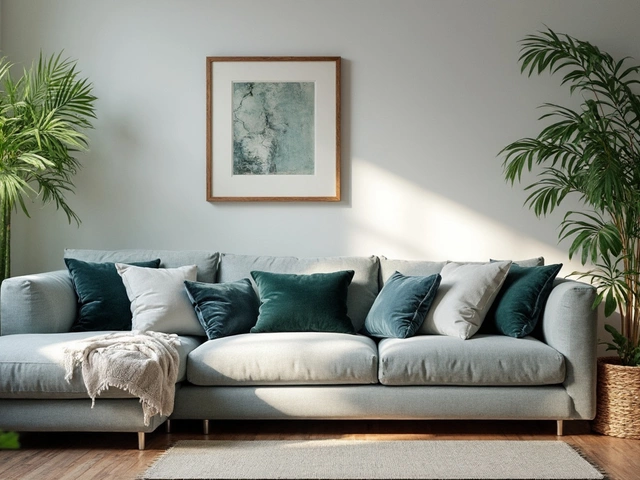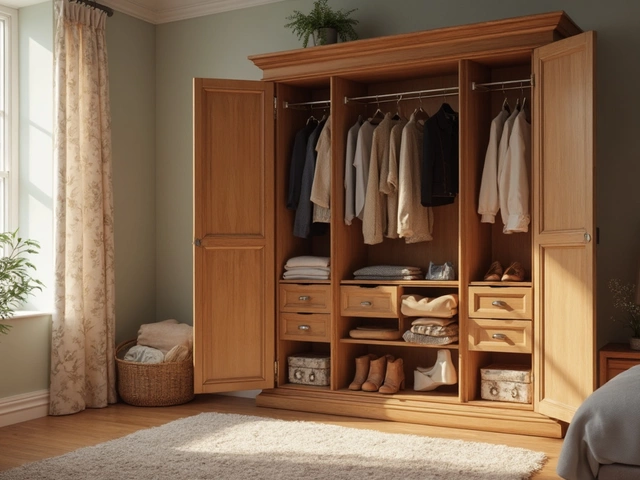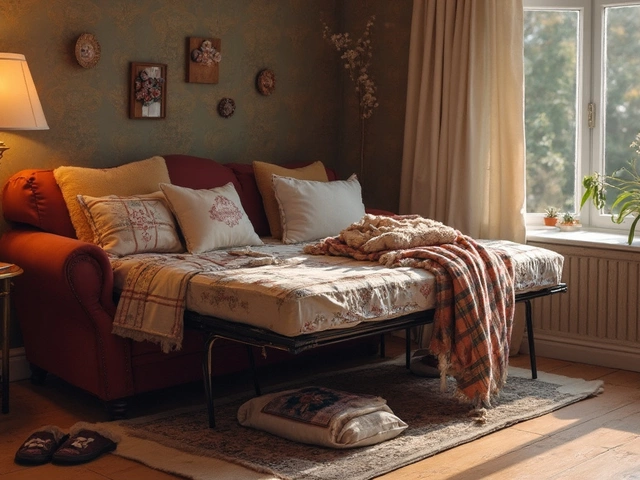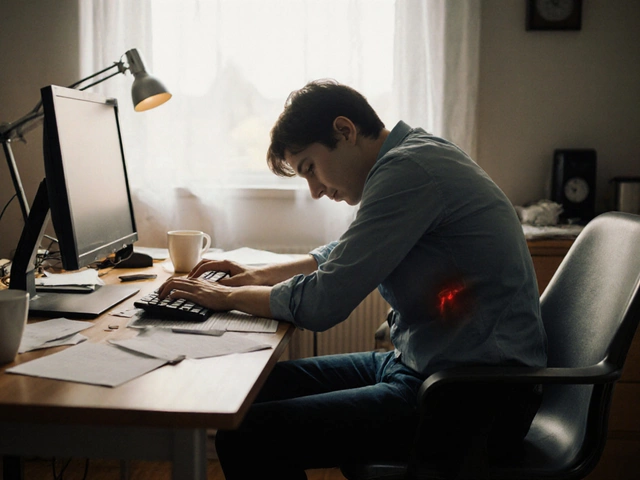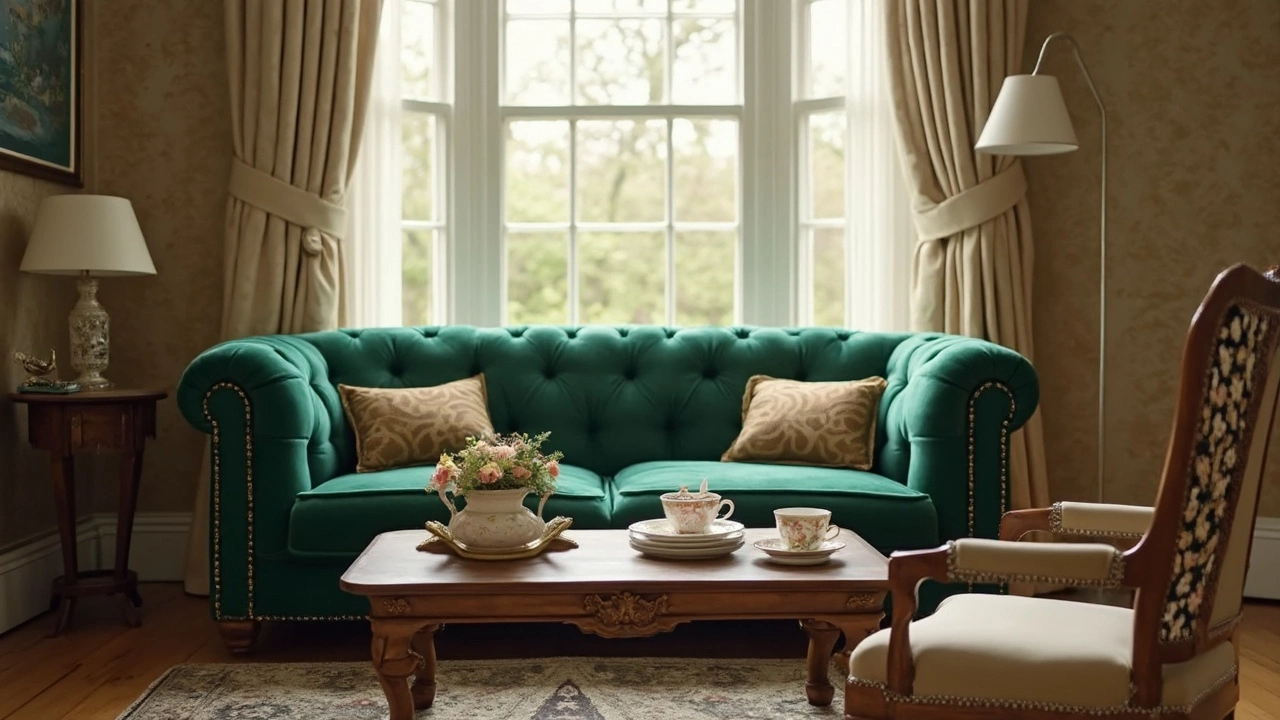 20
Mar,2025
20
Mar,2025
Ever found yourself awkwardly stretching to reach your coffee cup, only to knock it over? Or maybe you're so cramped that getting off the couch feels like navigating an obstacle course. That's where the magic of proper spacing comes in.
A good rule of thumb is to keep your coffee table about 18 inches away from the couch. This distance lets you extend your legs comfortably—think of it as the Goldilocks zone in your living room. Not too close, not too far—just right.
Of course, the 'one size fits all' approach doesn't work in every space. Got a tiny apartment? You might need to adjust. Big living room? You’ve got more leeway to work with. But no matter the size, keeping that sweet spot ensures you can relax without feeling hemmed in or scattered across the room.
- Why Distance Matters
- Standard Measurements
- Functional Considerations
- Tips for Small Spaces
- Aesthetics and Balance
Why Distance Matters
So, why does the space between your couch and coffee table matter so much? Well, it boils down to comfort, functionality, and aesthetics. When set just right, this critical gap can transform your living space from chaotic to cozy.
Comfort Zone
A snugly arranged living room ensures everyone can kick back and enjoy without stretching awkwardly or bumping knees. Studies suggest that keeping your coffee table around 18 inches from the couch creates an ideal comfort zone. This spacing allows for easy access to drinks, snacks, or remote controls, while giving you room to lounge without feeling cramped.
Functionality First
Proper furniture spacing is essential for the smooth flow of movement. Ever tried navigating a crowded room without tripping over something? It's not fun. The right distance ensures you and your guests don't perform a gymnastics routine just to get around.
Space Savvy
If you're working with a small space, you might think the closer the better. But hold up! Cramming everything too tight makes your room feel like a sardine can. Instead, create a balanced layout that maximizes both seating and moving space. This way, the room feels open yet inviting.
And hey, got a massive living area? You might need to play with distance a bit more to make sure your space feels neither empty nor overcrowded. Investing in a versatile coffee table can help adjust according to your needs.
Aesthetic Appeal
Last but not least, remember this isn't just about moving stuff around. A thoughtfully spaced setup elevates your room's look. Nobody wants a perfect couch with the world’s most accessible table if it all looks mismatched and awkward. Feng Shui experts often emphasize the harmony of furniture layout, aiming for a room that not only looks good but also feels right.
Getting the couch distance just right isn't rocket science, but it requires a bit of consideration to nail the balance between practicality and style.
Standard Measurements
Alright, let's talk numbers. What’s the ideal couch distance from a coffee table? Well, the standard suggestion is to keep about 16 to 18 inches between the edge of your couch and the nearest side of the coffee table. This is all about finding that sweet spot where function and comfort meet.
Why these numbers? It gives enough space for easy access while still keeping things close enough to be accessible. You're not constantly leaning forward awkwardly or hunching over, which means more comfort and less coffee spills.
"Good design is all about balance and understanding proportions," says interior designer Nate Berkus. "Keeping standard measurements in mind helps achieve harmony and flow in any living space."
For those who enjoy a more laid-back vibe, with a larger sectional or a sprawling sofa, going up to 24 inches can provide that extra room to breathe without disrupting the setup. It's like having your cake and eating it too.
Don’t forget the other key player here: the height of your coffee table. Ideally, the table should be the same height as your couch cushions, or up to two inches lower. This ensures that reaching for a cup of coffee doesn’t feel like a mini workout session.
As a general guide:
- Couch to coffee table distance: 16-18 inches
- Coffee table height: Matches seat cushion height, or slightly lower
- Coffee table width: Generally about two-thirds the length of the couch
If you nail these measurements, you're on your way to creating a living room that feels both inviting and functional. So, next time you're planning your furniture layout, remember these numbers!
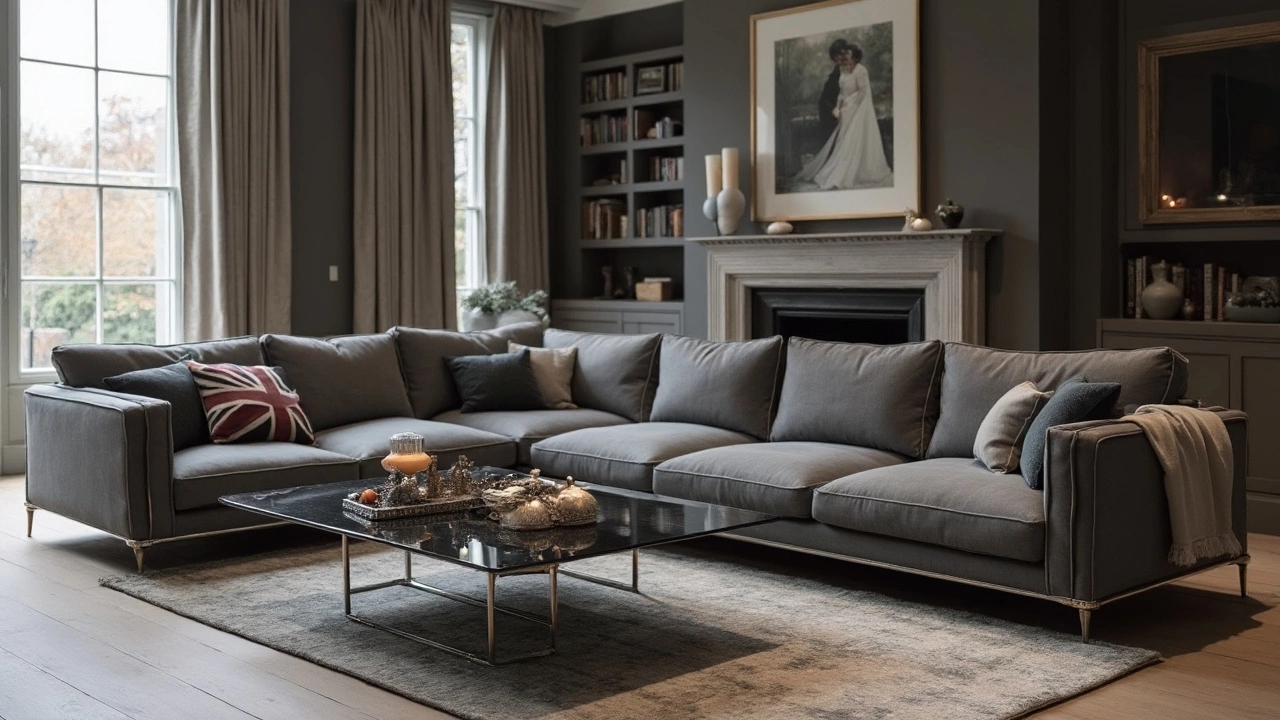
Functional Considerations
Beyond aesthetics, the distance between your couch and coffee table plays a huge role in how your living room functions. Think about everyday activities. Are you chilling with popcorn during movie nights? Or do you use the coffee table as a makeshift desk for work-from-home days?
Reach and Accessibility
The whole point of the coffee table being in front of your couch is accessibility. Ideally, you want to avoid any awkward stretches. Sitting on a sofa and having to reach far for a book or the remote isn't exactly comfortable. That precise 18-inch 'sweet spot' is highly recommended because it allows most folks to reach comfortably without effort.
Movement Flow
Apart from reach, you need to ensure there’s enough space for movement. Nobody wants to squeeze past the coffee table every time they stand up or sit down. If your living room often plays host to kids running or pets lounging around, keeping a bit of extra clearance lessens accidents.
Room for Legs
Legroom is crucial, especially if love propping your feet up. Many love using the coffee table as a versatile footrest while binge-watching shows. To avoid bumping knees and other furniture mishaps, check you're not compromising legroom with oversized tables or cramped designs.
| Activity | Space Needed |
|---|---|
| Casual sitting | About 18 inches |
| Kids playing | 20-24 inches |
| Working from table | 14-16 inches |
Functional room layouts take a little planning, but the comfort payoff is totally worth it. Once you figure out what distance works best for your needs, you'll nail both style and accessibility. And trust me, your shins will thank you.
Tips for Small Spaces
When living space is tight, arranging your coffee table and couch can be a bit like playing Tetris. But don't worry—I've got some tricks up my sleeve to help you make the most of what you've got.
Know Your Measurements
Start by measuring your space carefully. Understanding dimensions will guide you in maintaining that comfortable 18-inch sweet spot for your couch distance. Sometimes, you have to compromise a little, but knowing your limits keeps things from getting awkward.
Consider Multi-functional Furniture
In small spaces, think versatility. Consider a coffee table that also serves as storage or a bench. This way, you're not only saving space but also cutting down on clutter.
Go for a Minimalist Look
Opt for sleek, modern designs for your coffee table, which naturally take up less visual space. Glass tables, for example, can make a room feel more open because they don’t block sightlines.
Use Light Colors
Choosing light colors for your furniture helps make small areas feel larger. Reflective surfaces like glass or light wood finishes on the table can add to that spacious illusion.
Float Your Furniture
Don't feel like your couch needs to be against the wall. Floating it with a small space behind can sometimes provide better circulation and enhance the room's overall look.
By following these tips, you ensure a cozy yet efficient layout where every inch counts, without sacrificing the comfort and utility of your living room setup.
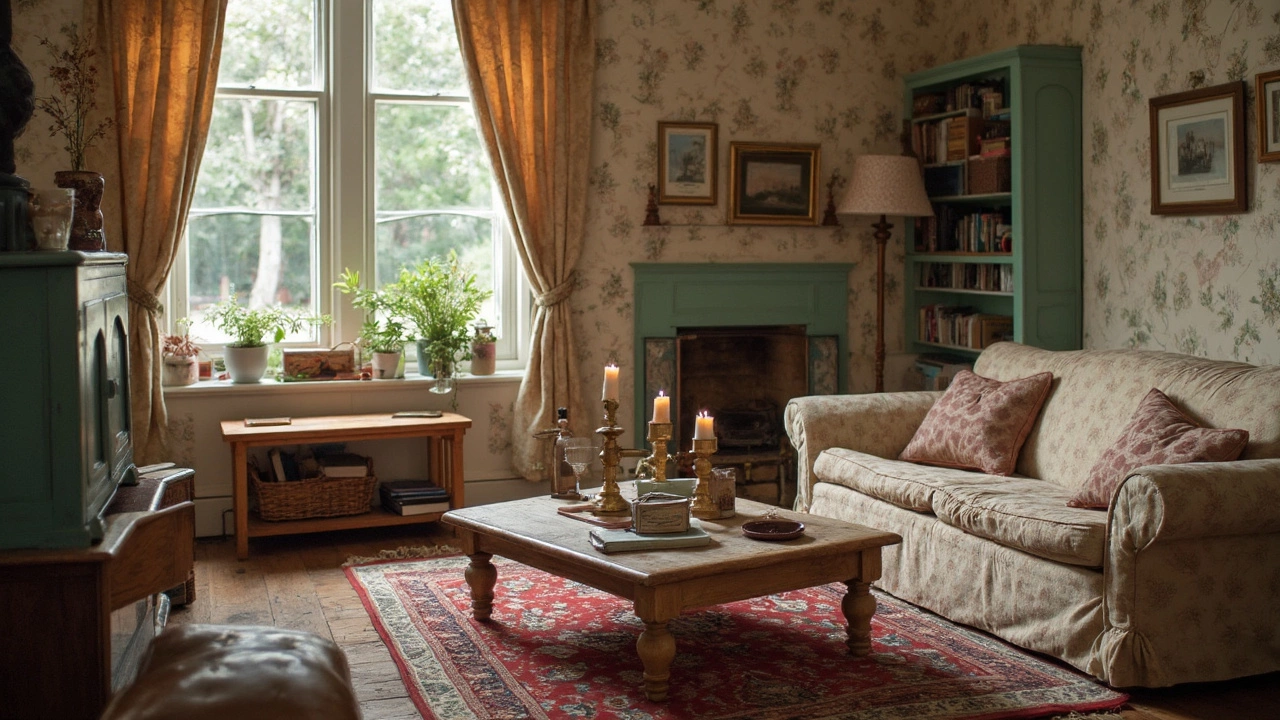
Aesthetics and Balance
Creating a living room that feels right isn't just about function—it's also about making sure your space looks amazing while being practical. The distance between the coffee table and the couch plays a big role in that.
Let's talk proportions. Having furniture in proportion to your room size is key. A big couch matched with a tiny coffee table will look odd, no matter how perfect the spacing. A wider table could work wonders, providing visual balance and still keeping things functional.
Color Coordination
Matching your furniture pieces can make a huge difference too. Imagine a dark wood table with a lighter couch; the contrast can be striking but only if there's balance elsewhere in the room, like with your rug or decor colors.
Make it Your Own
Adding some personal flair is always a good move. Whether that's with books, a vase of flowers, or a cool piece of art on the table, personalized accessories help your living room reflect your style. Just keep in mind that decor shouldn’t impede the table’s function.
Remember, the goal is a space where everything feels in sync. The right living room layout helps everything from conversations to coffee sipping happen without a hitch.
